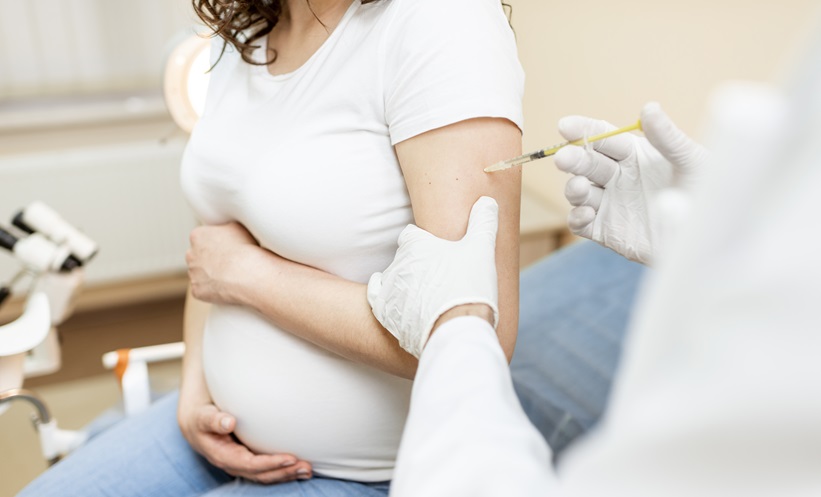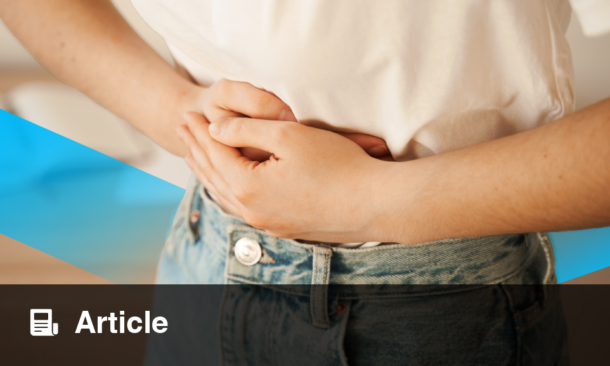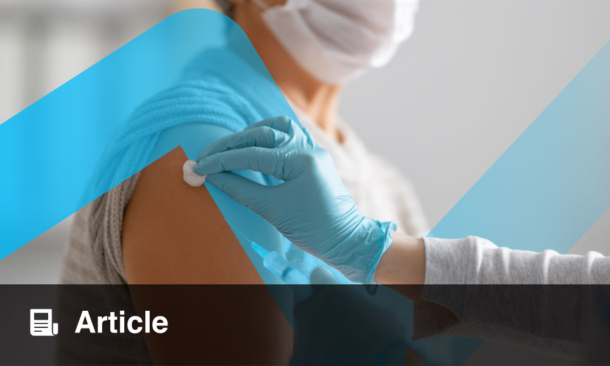VIRTUAL has become the main approach for communicating worldwide and we have all had to flexibly adjust due to the ongoing COVID-19 pandemic. This was the second year that the European Society of Human Reproduction and Embryology (ESHRE)Congress was held as an online meeting instead of the usual face-to-face. Cristina Magli, who has been serving as the ESHRE Chair for 2 years, opened the ceremony by welcoming all the participants to the annual virtual meeting. However, she stated that this will be her last year serving in this position and her successor for the following years will be Carlos Calhaz-Jorge, Human Reproduction Unit, Faculdade de Medicina da Universidade de Lisboa, Portugal, who has also been an active member within the society for several years.
One of the highlights of the opening ceremony was the special appearance of Massimo Polidoro, a famous psychologist who was invited to discuss the ongoing ‘fake news’ and conspiracy theories associated with the COVID-19 pandemic. According to Magli, during the COVID-19 pandemic a group of individuals hesitant to receiving the COVID-19 vaccine had started a rumour about the vaccine causing infertility in females, which she confirmed was entirely fabricated. The ESHRE society have an active COVID-19 working group that was established on 25th March 2019 in response to the COVID-19 pandemic. This group has published nine statements on COVID-19 and vaccination and effects on assisted reproductive technology and pregnancy.
Polidoro started his session by explaining how we live in a polarised world populated with different perceptions, beliefs, and most certainly conspiracy theories. He continued by stating how fake news and conspiracy theories during the COVID-19 pandemic have been particularly dangerous this the past year. Ridiculous claims such as that eating garlic and injecting disinfectant into the blood stream could cure the virus have been particularly harmful. “A common trait of these such ideas is the denial of reality,” said Polidoro. The rejection of facts and suggestions of alternative views show that, unfortunately, certain individuals may have trouble accepting the complexities of the present times. The boundaries between the reality and fantasy are often blurred and it is therefore sometimes difficult to dissociate. According to Polidoro, fake news can be spread more rapidly due to the internet. The psychologist stated that our perceptions and reasoning can easily be misled due to the constant battle between our rationalised fear and that based off our instincts. Generally, when the brain processes information opinions are formed quickly and more instinctively; however, an in-depth assessment of this information in the brain takes longer and requires more energy. As humans, we tend to seek confirmation for our beliefs even though they may be wrong; this is referred to by psychologists as cognitive dissonance. Polidoro suggested that we should all think like scientists when information is provided to us especially via the web: cultivate scepticism, finding the source of information and identifying any conflicts of interest and credibility, verifying information before sharing it, and recognising our limitations by being aware of our cognitive biases. Finally, Polidoro stated that correlation is not similar to causation, and further explained that the fact that two phenomena occur simultaneously does not mean that one is the cause of the other. He concluded the session by stating, “always keep an open mind when faced with new discoveries or information.”
The ESHRE 2021 meeting was, for the first time, extended from 4 to 6 days. The first 2 days covered several insightful pre-congress courses and the remaining 4 days were solely dedicated to a scientific programme featuring plenary, keynote, and industry-sponsored sessions.
There was an all-time record membership of 10,731, which was an increase of 13% compared to the previous year. There were 774 ePosters and 1,312 abstracts. Awards in this year’s ESHRE congress covered five presentations, selected and rewarded with a prize of 2,000 EUR. Cheow Yuen Tan, Robinson Research Institute, Department of Obstetrics and Gynaecology, The University of Adelaide, Australia, was awarded the best oral presentation on a basic science topic. Maria Schubert, Centre of Reproductive Medicine and Andrology (CeRA), Department of Clinical and Surgical Andrology, University Münster, Germany, was awarded the best oral presentation on a clinical science topic. Chang Liu, Reproductive Medicine Center, Nanjing University Medical School, China was awarded the prize for best poster presentation on a basic science topic. Marine Grellet-Grün, Department of Reproductive Biology, Centre Hospitalier Universitaire de Reims, France was awarded best poster presentation on a clinical science topic. Bieke Bekaert, Department of Human structure and Repair, Ghent University, Belgium was selected for an exchange educational travel grant award, to present the data of an oral presentation from the annual meeting of the Fertility Society of Australia (FSA). Paulien Pijpops, Department for Development and Regeneration, Leuven University, Belgium, was awarded the nurse award for best oral presentation.
The ESHRE Chair concluded the meeting by thanking all the participants and presenters. She stated that ESHRE’s 2022 annual meeting will take place in Milan and will be the Society’s first hybrid event.
Increased Perinatal Health Risks with Use of Non-Prescription Painkillers
MONUMENTAL evidence has been collated from a study spanning 30 years, suggesting women who use over-the-counter painkillers during pregnancy are 1.5-times more likely to have a baby with health issues. Study of this relationship included focus on preterm delivery, stillbirth or neonatal death, physical defects, and a host of other outcomes, all of which were less frequent in mothers not taking the aforementioned drugs. The emerging evidence, from the University of Aberdeen, Scotland, has impact upon the healthcare guidance for pregnant women; Aikaterini Zafeiri, the lead investigator in the current study, who shared the findings at ESHRE 2021, suggested this information “should be reassessed” in line with their findings.
Utilising data between 1985 and 2015 from the Aberdeen Maternity and Neonatal Databank, the medical notes for a total of 151,141 singleton pregnancies were analysed for the consumption of five painkillers: paracetamol, aspirin, diclofenac, naproxen, and ibuprofen. Results demonstrated 3 out of 10 (29%) women took unprescribed analgesics during pregnancy, a figure which increased dramatically to reach 60% in the last 7 years of the study period. These results imply that use is growing at an alarming rate, especially when it is observed that 84% of women reported use during the first 12 weeks after conception. Adjusted odds ratios for the health risks of use of at least one of the five drugs were neural tube defects: 1.64%; admitted to a neonatal unit: 1.57%; neonatal death: 1.56%; premature delivery (before 37 weeks): 1.5%; baby’s condition at birth scoring <7 at 5 mins (on appearance, pulse, grimace, activity and respiration; APGAR scale): 1.48%; stillbirth: 1.33%; birth weight <2.5 kg: 1.28%; hypospadias: 1.27%; APGAR score <7 at 1 min: 1.18%; and birth weight >4 kg: 1.09%. Paracetamol use alone was not significantly associated with high birth weight, neural tube defects, or hypospadias; meanwhile, diclofenac consumption was associated with significantly decreased odds of stillbirth, potentially explained by its anti-inflammatory profile.
This large longitudinal study raises great clinical awareness when it is considered that 30–80% of women use painkillers globally to alleviate pain and other unfavourable symptoms during pregnancy. Undoubtedly, the findings will improve and clarify the dissemination of information about the safe use of drugs during gestation, which at the moment varies widely, with some considered safe and others not. Zafeiri highlighted these safety concerns, stating that the ease of access to painkillers is exaggerated by incorrect information found on the internet: “This is especially when misinformed or partially-informed self-medication decisions are taken during pregnancy”.
Embryo Freezing in IVF Increases Blood Pressure Risk in Pregnancy
SUCCESSFUL embryo freezing started in the 1980s, and patients can now choose to freeze their healthy embryos to have children later in life. In the past, embryo freezing has not revealed any worrying side effects. However, a recent study, shared at ESHRE 2021, found a potential link between embryo freezing for in vitro fertilisation (IVF) and blood pressure problems in pregnancy when the uterus is ready for hormone replacement therapy.
A 2013–2018 study in France involving a large cohort of 70,000 pregnancies from an IVF database, delivered after 22 weeks gestation, analysed the effects of embryo freezing in pregnancy. The patients were divided into three groups: n=10,373 pregnancies from frozen embryo transfer with hormone replacement therapy, n=9,500 pregnancies from frozen embryo transfer in a natural ovulatory cycle, and finally n=48,152 conventional fresh transfers.
The results revealed that there was a significantly higher risk of high blood pressure and hypertension in pregnancies with frozen embryo transfer with hormone replacement therapy (5.3%) compared to frozen embryo transfer in a natural ovulatory cycle (2.3%) and fresh embryo transfers (2.4%). Slyvie Epelboin, from the Bichat–Claude Bernard Hospital, Paris, France, presented these results at the congress and explained that the data indicated two vital considerations in IVF. Firstly, the possibility of high blood pressure and hypertension in frozen embryo transfer in hormone replacement therapy and secondly, that the corpus luteum may have a protective effect. Epelboin infers that hormone replacement therapy affects the formation of the corpus luteum and therefore no longer protects individuals from vascular pathologies.
Furthermore, it is important to consider whether the benefits of embryo freezing with IVF outweigh the risks; results show that currently, it does. Embryo freezing with IVF has a lower chance of hyperstimulation, indicating that this method has its safety benefits. Scientists concluded that there is a higher risk of vascular pathologies in pregnancies with frozen embryo transfer and hormone replacement therapies in comparison to preserved ovulation and using fresh embryos. The study summary for ESHRE 2021 added that preserving the ovulatory cycle in frozen embryo transfers could be a viable approach in the future.
Double Stimulation Approach to Improve IVF Response
IN 1978 the world’s first baby was born by in vitro fertilisation (IVF). This treatment dates to over half a century ago. Since then, IVF has undergone further development, and new technology has helped improve responses. The traditional approach of IVF treatment involves a single dose in a single cycle; if this approach fails, then the patient may be offered to have another round of IVF treatment. Clinical guidelines suggest that increasing the drug dose has little benefit in improving response. Poor responses in particular patient groups remain a key challenge.
Irrespective of the clinical guidelines, a randomised trial, shared in a press release at ESHRE 2021, evaluated the efficacy of two cycles of ovarian stimulation and two collections of eggs. This double stimulation approach was coined as ‘DuoStim’. Researchers recruited 80 patients, aged >38 years, undergoing IVF treatment. Patients who took part in the trial had had a low response to IVF in the past; this was confirmed by ovarian reserve tests and reproductive history.
To compare the efficacy of a double stimulation approach with the conventional single cycle, patients were randomised to receive either DuoStim or two separate cycles of stimulation. Interestingly, results showed that DuoStim was just as effective as the two separate cycles, with the added benefit that DuoStim is faster. The results also showed a significant difference in the time it took to develop a normal embryo for transfer. In the DuoStim group, this occurred on average 23 days after stimulation, whereas in the other group it took 21 days longer.
Another added benefit of DuoStim is that fewer patients dropped out of this treatment due to the shorter time required. Maria Cerrillo Martinez explained how this new approach might be beneficial to patients with limited time available, including patients with cancer and older patients.
Cerillo concluded: “It may be a good alternative in poor responders, in fertility preservation patients with time constraints, or even in egg donors, whose aim is to maximise the number of eggs retrieved in a single treatment.”
IVF Success Rates Is Due to Late-stage Embryo Transfer and Embryo Freezing
SUCCESSFUL in vitro fertilisation (IVF) rates could be due to the implementation of two widely used techniques, late-stage embryo transfer and embryo freezing, following the results for a large cohort observation study carried out in from the national IVF registry of Sweden. The study involved approximately 125,000 treatments that took place between 2007 and 2017, and was presented on 30th June 2021 at ESHRE 2021 by Zoha Saket, Sahlgrenska University Hospital, Gothenburg, Sweden.
According to the national data analysed, the accumulation of live birth rates increased from 27% in 2007 to 36% in 2017 following each egg retrieval cycle. Previous studies showed that the transfer of blastocysts was linked with higher birth rates compared to cleavage-stage embryos. Additionally, the rise in the overall live birth rate was found to be independent of age, the number of eggs collected, and the number of preceding IVF live births, which suggested that the treatment methodology was the main cause of the IVF live birth success rates.
Saket stated that the blastocyst transfer in IVF, whereby embryos were cultured for 5–6 days and then transferred after freezing, was noted to be an important contributor to the improved birth rates over time. Currently, the majority of IVF registries state that approximately 75% of all embryo transfers happen during the blastocyst stage. This transfer is similar to physiological processes of natural pregnancy as the embryo is implanted in the uterus at the same blastocyte stage. A revolutionary rapid-freezing technology called vitrification is used to turn the retrieved cells into a glass-like state within seconds. This technique ensures that ice crystals do not form and therefore the frozen cells are not damaged during the thawing process.
“We have seen a substantial increase in cumulative live birth rate taking place over time,” said Saket, “and this has happened in parallel with an increase in blastocyst transfer, particularly when used with frozen treatments.
Does Previous COVID-19 Infection Affect Success in IVF?
COVID-19 has caused concern in multiple therapeutic areas and bodily systems, including the reproductive system. Scientists aimed to explore how a previous infection with COVID-19 could potentially affect the chance of success in pregnancies occurring via in vitro fertilisation (IVF), and shared the findings in a press release for ESHRE 2021.
Scientists have discovered that receptors for severe acute respiratory syndrome coronavirus 2, namely the angiotensin-converting enzyme 2 receptor, are widely expressed in the ovaries. For this reason, there is anxiety in patients as to whether there is any link between previous COVID-19 infection and fertility treatment.
A recent study aimed to evaluate whether previous COVID-19 infection affected the chance of success in IVF. The study took place in a fertility clinic in Spain and included 46 patients. Patients awaiting IVF treatment had baseline hormones measured such as the anti-Müllerian hormone (AMH). AMH is an indicator of ovarian reserve; in recent times, AMH is measured in many clinics as a predictor of patient response to ovarian stimulation in IVF.
The results showed that there were no changes in AMH levels before and after the COVID-19 infections. From this, the researchers could infer that a previous infection of COVID-19 did not affect the chance of success in patients having IVF treatment. Although there was a small decrease in AMH in patients who were predicted to have a normal response to IVF, this was not enough to suggest that COVID-19 was behind this decline or that COVID-19 affected the chance of success.
Finally, the study concluded that COVID-19 does not impact fertility; this result is reassuring for patients who are worried about previous COVID-19 infections affecting the outcome of their IVF treatment. Despite these favourable results, it is important to consider the small sample size and question the robustness of the data. Nonetheless, other studies conducted so far in a similar field have supported the results in this study and, overall, the results are promising.
UK Study Presents Over-Retrieval of Oocytes in IVF
SURFACING information from a retrospective observational study in the UK has suggested that IVF clinics are retrieving too many oocytes, that a large number of these are not used, and have been discarded as a result. Findings focused on the number of eggs retrieved and IVF cycles; >1.625 million eggs in the UK were retrieved from 147,274 women between 2015–2018. Gulam Bahadur, North Middlesex University Hospital, London, UK, presented the research findings at ESHRE 2021, suggesting that the eye-opening discovery about UK clinics is likely reflected in other global practices.
Reasoning for the high egg retrieval lies in part with implementation of egg freezing, frozen embryo replacement cycles, and aggressive stimulation regimes, aimed to boost success rates in older women and those poor responders who produce fewer eggs. Researchers describe the unknown impacts of overstimulation practices on the health of patients, as well as upon their emotional health and financial wellbeing.
The report is extrapolated from study in all UK IVF clinics, relating to the non-donor fertility treatment carried out using 172,341 fresh oocyte retrieval cycles. An average of 11 eggs were collected per patient, 16% of cycles were associated with 16–49 oocytes retrieved per cycle, and 58 women had >50 eggs collected in a single egg retrieval procedure. Notably, the study discovered a large proportion (n=10,148) of cycles did not yield any oocytes. Of all IVF cycles, 53% were in the desired egg yield range of 6–15, one-quarter of all cycles resulted in 1–5 eggs, 14% produced 16–25 eggs, and only 2% yielded 26–49 oocytes. From all the eggs retrieved, a total of 931,265 embryos resulted to create a fertilisation rate of 57%; 22% of these were transferred into the uterus, and 24% were frozen. The remaining 43% unfertilised oocytes were likely to have been discarded in line with normal practice. The authors made a point to mention that of the 54% of embryos not transferred, a large majority will be discarded, after patients have paid for several years to maintain them in storage.
This study stimulates rethinking of current egg collection practices, highlighting the importance of recognising the ethical concerns at play, as well as procedural impracticalities, both of which should be carried forward by future study. This is summarised by Bahadur’s statement: “Our observation suggests that the high oocyte number per retrieval procedure needs re-evaluation,” including focus on “procedure-related complications, and on the fate of unused frozen oocytes and the costs associated with freezing them.” Future practice is encouraged by this work to consider “financial and emotional cost,” and to provide patients with “more information about the implications of freezing eggs and embryos.”
Artificial Intelligence Advancement Limits Need for Cell Biopsy in Embryo Testing
ARTIFICIAL intelligence (AI) and computer vision could be taking over in vitro fertilisation laboratory processes, especially in embryo testing for chromosomal content. Euploids are embryos with a normal complement of chromosomes, which have a better chance of implanting in the uterus leading to pregnancy, whilst aneuploid, abnormal embryos have barely any chance of implantation. A routine test in many fertility clinics is to test for aneuploidy, also known as PGT-A*, which requires samples of single or multiple cells acquired from the embryo via biopsy. As this method is invasive, a need for non-invasive methods has arisen.
A new study presented by Lorena Bori, IVIRMA, Valencia, Spain, at ESHRE 2021 on 28th June 2021, suggested that AI methodology using time-lapse imaging to observe cell activity could visually distinguish euploid embryos from aneuploid embryos, with no need for cell biopsy. Time-lapse technology over the past decade has revolutionised the visualisation of embryo growth by providing images throughout embryo development. Prior to this study, the time-lapse imaging technique has not been able to provide precise evaluation of an embryo’s chromosomal content status. However, this study showed that a combination of computer vision with AI could provide an impartial and reliable prediction of embryo status before implantation.
The baseline of the study was that euploid embryos start their development to blastocysts slightly earlier than aneuploid embryos, and this could be identified via computer vision by the use of microscopic measurements of the cell’s edges. This is an accurate method of calculating the number of cells and observing the blastomere cell cycle. The study, using computer vision-based measurements of cell edges and AI time-lapse videos, retrospectively compared 111 euploid and 120 aneuploid embryos. The results showed that despite the aneuploid embryos beginning their development to blastocysts slightly later than euploid embryos, their higher level of cell activity meant that aneuploid embryos achieve their growth to the blastocyst stage faster than the euploid embryos.
“Our results show for the first time,” said the authors of the study, “that an AI-based system can precisely measure microscopic cell edges in the dividing embryo, which allowed us to distinguish between euploid and aneuploid embryos.”
Patients Paying for IVF Add-On Treatments with Limited Evidence
ACCORDING to research findings presented by Sarah Lensen, Postdoctoral Research Fellow, Department of Obstetrics and Gynaecology, University of Melbourne, Australia, at ESHRE 2021, the majority of women undergoing in vitro fertilisation (IVF) are opting to pay for add-on therapies despite limited evidence supporting their effectiveness.
Data were collected through an online survey, which was advertised on Facebook, distributed to women undergoing IVF, and completed between June and July 2020. Gestational surrogates, patients who used a surrogate, and individuals who donated eggs or underwent elective egg freezing were excluded from the analysis. Participants were asked about their IVF and medical history, add-on use over the past 3.5 years, and what importance they placed on evidence concerning effectiveness and safety.
This retrospective study focused on a cohort of 1,590 Australian women. Overall, >72% had incurred additional costs from these unproven or experimental treatments. The most commonly used of these optional extras were acupuncture (45%), pre-implantation genetic testing for aneuploidy (28%), and Chinese herbal medicine (26%).
Only 18% of women reported having raised the issue of add-on options first. Over half (54%) of respondents stated that they had initially heard about them from their fertility specialist.
Additionally, 30% of women experienced moderate-to-severe regret about using add-ons compared with 34% who had no regret at all. The level of misgivings were higher among women who had failed to conceive or achieve a live birth.
Many women placed significant importance on scientific evidence corroborating the use of add-ons, in terms of either improving live birth rates (55%) or safety (73%). In reality, these adjunct treatments are generally not supported by evidence that they increase live birth rates. Indeed, some (e.g., immune therapies) are associated with low birth weight and other complications.
In summary, Lensen stated that the use of some adjunct therapies is likely to be “associated with a significant financial burden” and may “potentially pose risk to patient.” For this reason, the Human Fertilisation and Embryology Authority (HEFA), which oversees the use of embryos and gametes in fertility treatment and research in the UK, has introduced a traffic light system to rate add-ons; to date, none have been awarded a green signal. Going forward, there is a need for such impartial evidence-based information in other countries.
No Increased Risk of Cancer Development in ART Children
RECENT evidence has emerged suggesting that children and young adults conceived through assisted reproductive technology (ART) show no increased risk of cancer development. These findings follow growing developments suggesting that ART procedures affect the normal genetic modifications that occur in the embryo before implantation. Results of this 18-year median follow-up study were presented at ESHRE 2021 on 28th June 2021 by Mandy Spaan, Amsterdam University Medical Center (UMC) and Netherlands Cancer Institute, Amsterdam, Netherlands. With dramatic increases in the number of children born through ART procedures in the last decade, studies such as this hold great importance for public health.
It was previously speculated that many aspects of the ART process, including the use of fertility drugs and embryo freezing and thawing, could have a potentially harmful impact on the functioning of embryos through epigenetic changes. The median follow-up study carried out included 89,249 children born by subfertile women between 1980 and 2012, 51,417 of which were conceived through different means of ART. Analysis demonstrated that over the 18-year study, 358 cancers were diagnosed in children: 157 in the ART group and 201 in the non-ART group. This evidence reveals that there was no increased risk of malignant cancer development in ART-conceived children compared to those conceived naturally.
When delving deeper into the various types of ART, however, it was observed that children conceived by intracytoplasmic sperm injection (ICSI) had a higher risk of developing cancer. Authors have revealed that this may have been down to chance and was likely driven by an increased risk of melanoma development, as seen in four cases. There was also no increased risk of cancer development in those conceived through frozen embryo transfer (FET) compared to fresh embryo transfer. Spaan described these results as “an important contribution to current knowledge about health risks in ART offspring,” which will provide both parents and clinicians with evidence regarding potential cancer risks in ART-conceived offspring.
Accurately Predicting Ovarian Failure in Girls with Cancer
CANCER treatments, such as chemotherapy and radiotherapy, can damage the ovaries, causing primary ovarian insufficiency (POI). Although ovarian tissue cryopreservation (OTC) can be offered to safeguard future fertility, it is invasive, has risks, and evidence suggests that most girls do not develop POI (the prevalence after childhood cancer is estimated at 10%). Consequently, a selection tool has been developed to accurately predict ovarian damage in girls under 18 years of age. Ruth Howie, University of Edinburgh and NHS Lothian, Edinburgh, UK, presented the research findings at the 37th ESHRE virtual Annual Meeting 2021.
Results were obtained from a long-term follow-up study of 423 girls and young women. Nearly 25% (n=9) of the 37 individuals classified as high-risk by the Edinburgh selection criteria were diagnosed with POI. Conversely, only 3% of the 386 patients categorised as low-risk developed premature ovarian failure. The Edinburgh selection criteria for OTC, based on knowledge of relevant scientific literature and clinician experience of POI, were developed by a multidisciplinary group of experts and have been in use since 1996.
Data were based on all females (<18 years) diagnosed with cancer in Southeast Scotland between 1st January 1996 and 30th April 2020. Reproductive function was assessed by evidence of puberty, hormonal measurements, the presence of menstruation, pregnancy, or POI diagnosis at most recent follow-up to October 2020. In the present study, the average time for developing POI was 5.8 years.
Of the 639 individuals diagnosed, approximately 34% (n=216) were excluded from the analysis, including those on hormonal contraception, girls aged under 12 years, and individuals who died before the age of 12 years. Of the 423 remaining patients, more than a third (n=143) had unknown reproductive outcomes.
Therefore, a subgroup analysis of 280 patients was performed in addition to the primary analysis. Twenty-nine of the 280 individuals were identified as high-risk of POI and offered OTC, with 31% (n=9) subsequently developing the condition. In contrast, only 4% (n=11) of the 251 low-risk patients developed the condition.
To summarise, Howie highlighted that the Edinburgh criteria “are a robust tool for selecting those at high risk at the time of diagnosis who should be offered OTC.” Even so, it is important to continuously review the criteria via long-term follow-up of the reproductive outcomes of those assessed.








